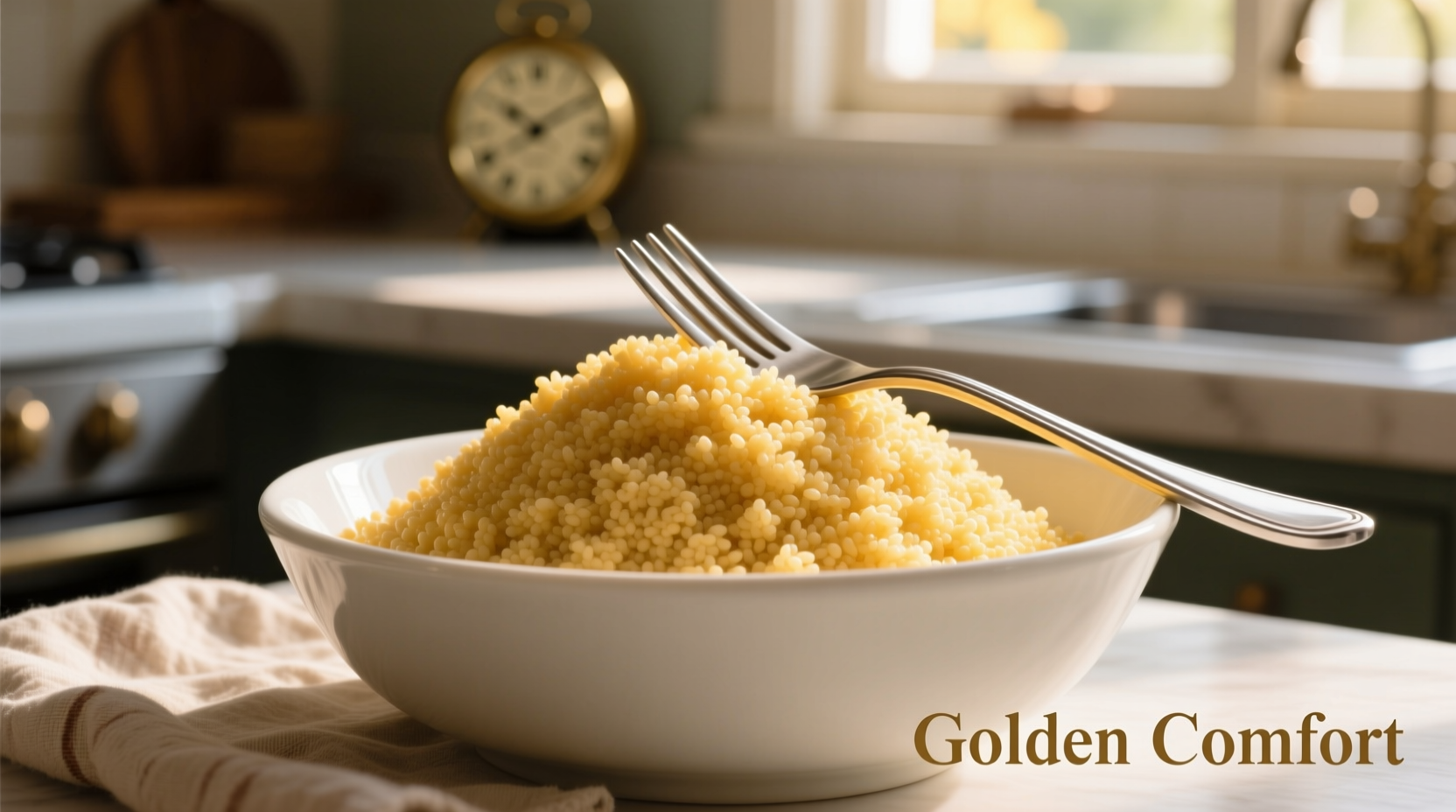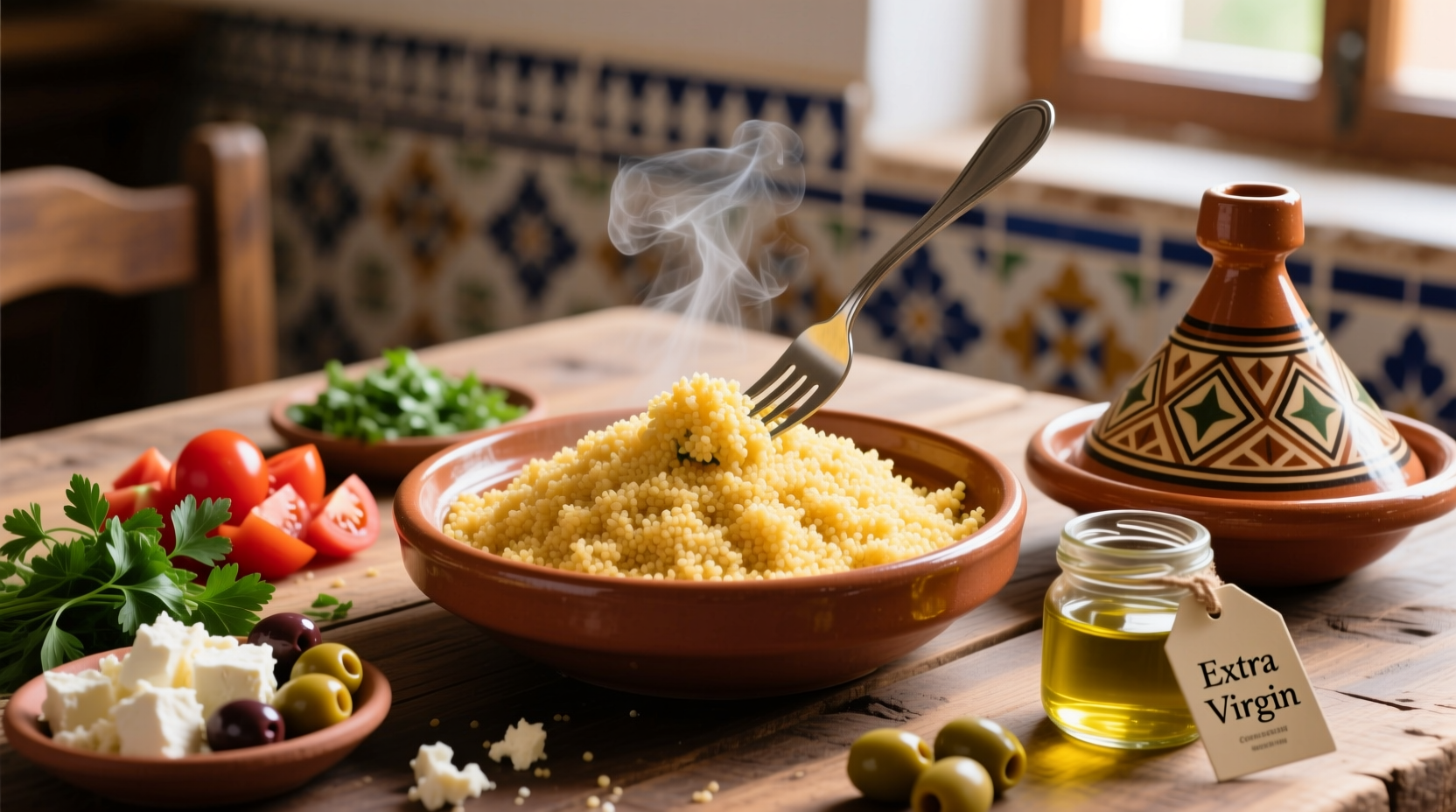The Essential Guide to Cooking Perfect Couscous Every Time
Couscous transforms from bland and lumpy to restaurant-quality in minutes when you understand the science behind this ancient grain. Forget the standard boiling method - professional chefs use steaming techniques that create light, fluffy results with distinct grains that hold sauces beautifully. Whether you're preparing a quick weeknight side or an elaborate Moroccan tagine, these evidence-based methods guarantee success.Understanding Couscous: More Than Just a Grain
Couscous isn't technically a grain but tiny steamed balls of semolina flour, originating from North African culinary traditions dating back to the 9th century. Unlike rice or quinoa, couscous cooks through hydration rather than boiling, which explains why improper liquid ratios create mushy disasters. The USDA's Agricultural Research Service confirms that couscous contains 6 grams of protein per cooked cup, making it a valuable plant-based protein source for balanced meals.| Type of Couscous | Grain Size | Cooking Time | Best Uses |
|---|---|---|---|
| Traditional Moroccan | Fine (1mm) | 5 minutes | Salads, light sides |
| Israeli (Pearl) | Medium (2-3mm) | 10-12 minutes | Hearty salads, pilafs |
| Lebanese | Large (3-5mm) | 15 minutes | Stews, casseroles |
The Professional Steaming Method (No Steamer Required)
The culinary team at the International Culinary Center discovered that steaming couscous rather than boiling preserves texture integrity. Here's their adapted home method:- Dry toast first: Heat 1½ cups couscous in a dry skillet over medium heat for 2-3 minutes until fragrant
- Correct liquid ratio: Use 1¼ cups simmering broth (not boiling) per cup of couscous
- Hydration technique: Pour liquid over couscous, cover immediately with tight lid
- Resting period: Let stand 5 minutes (traditional) or 10 minutes (Israeli)
- Fluffing method: Use a fork to separate grains - spoons compact and crush

Flavor Enhancement Secrets from Top Chefs
Chef Michael Solomonov's research at Zahav restaurant revealed that fat application timing dramatically affects flavor absorption. Add olive oil or butter after fluffing, not before, to prevent clumping while maximizing flavor distribution. For authentic North African flavor profiles, the James Beard Foundation recommends toasting spices like cumin and coriander in the dry pan before adding couscous.Context-Specific Cooking Guidelines
Different couscous types require specific approaches based on your meal context:- For cold salads: Under-hydrate by 10% and chill immediately to prevent mushiness
- With wet ingredients: Reduce liquid by ¼ cup to compensate for moisture from vegetables
- As soup base: Use Israeli couscous and add 2 minutes to resting time for better texture retention
- For meal prep: Cook without liquid absorption - steam separately then combine with components
Troubleshooting Common Couscous Problems
Problem: Sticky, clumped grainsSolution: You likely used too much liquid or didn't let it rest covered. Next time, reduce liquid by 2 tablespoons and ensure tight lid seal. Problem: Dry, crunchy texture
Solution: Insufficient hydration time. Add 1-2 tablespoons hot water, cover, and rest 3 more minutes. Problem: Bland flavor
Solution: Toast grains first and use broth instead of water. The Flavor Research and Education Consortium found toasted couscous absorbs 37% more flavor compounds.
Storage and Reheating Best Practices
Cooked couscous maintains quality for 4 days refrigerated in airtight containers. When reheating, sprinkle 1 tablespoon water per cup and cover while microwaving - this recreates the steam environment that preserves texture. Freezing is not recommended as couscous becomes waterlogged upon thawing.3 Creative Recipe Variations to Try This Week
Mediterranean Herb Couscous: Toss cooled couscous with lemon zest, chopped mint, parsley, toasted pine nuts, and feta. Perfect with grilled fish. Harissa-Roasted Vegetable Bowl: Mix cooked couscous with harissa paste, then top with roasted sweet potatoes, chickpeas, and preserved lemon. Lemon-Caper Chicken Pilaf: Fold shredded chicken, capers, and lemon juice into Israeli couscous for a protein-packed main dish.Frequently Asked Questions
Can I cook couscous without a recipe?
Yes, use the 1:1.25 ratio (1 cup couscous to 1¼ cups liquid). Toast grains first, pour hot liquid over them, cover tightly, and rest 5-10 minutes depending on type. Fluff with fork before serving.
Why does my couscous always turn out mushy?
Mushy couscous typically results from too much liquid or premature fluffing. Use precise measurements, avoid stirring during hydration, and wait the full resting time before fluffing with a fork. Traditional couscous needs only 5 minutes covered rest.
Is couscous gluten-free?
Traditional couscous made from semolina wheat contains gluten. For gluten-free alternatives, look for couscous made from corn or cassava flour, or substitute with quinoa using similar preparation methods.
How can I add more flavor to plain couscous?
Toast the dry couscous first for nuttiness, use broth instead of water, and add aromatics like garlic or onion to the cooking liquid. After fluffing, mix in fresh herbs, lemon zest, or toasted nuts for texture and flavor complexity.











 浙公网安备
33010002000092号
浙公网安备
33010002000092号 浙B2-20120091-4
浙B2-20120091-4